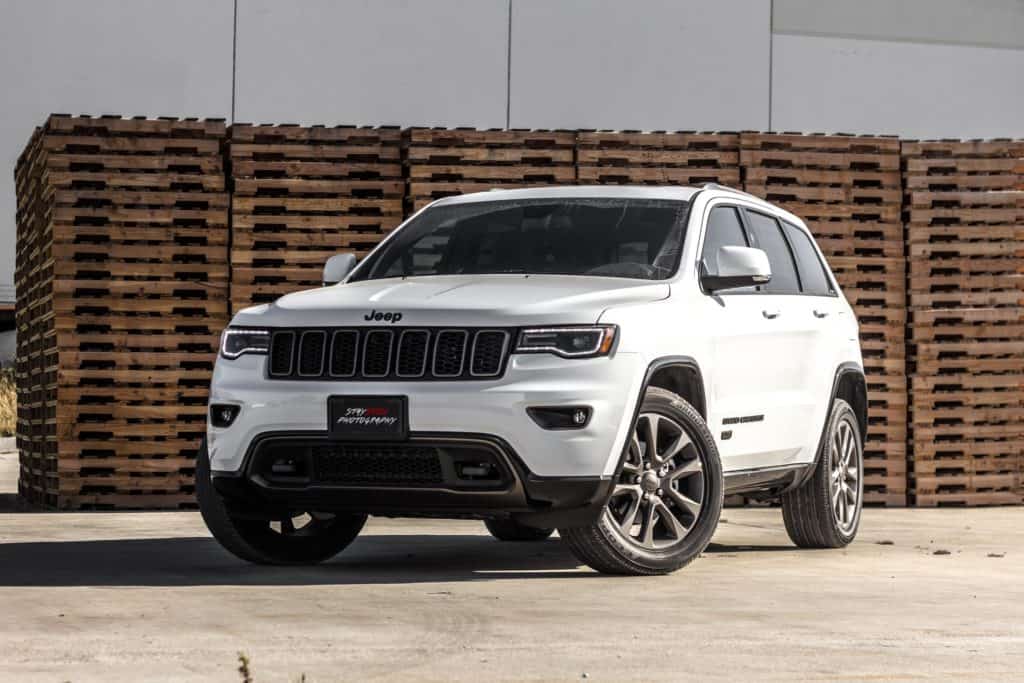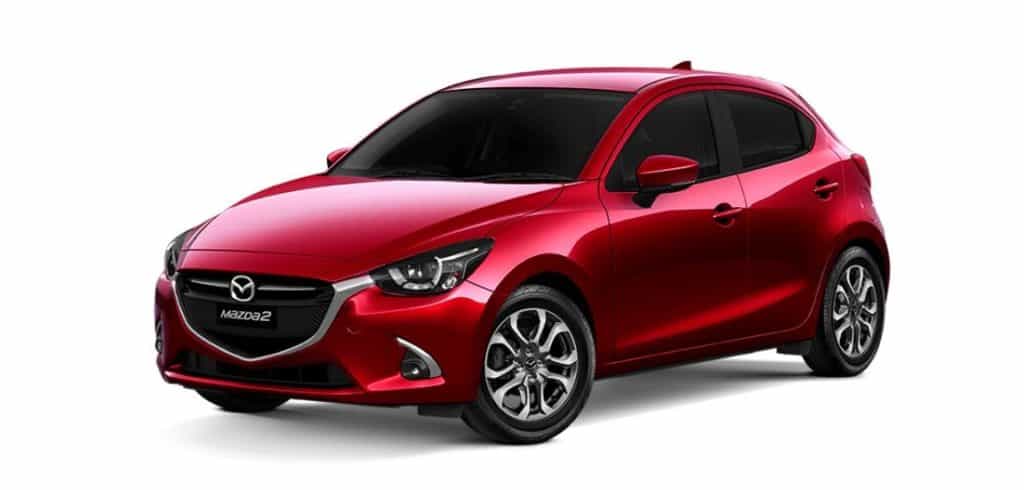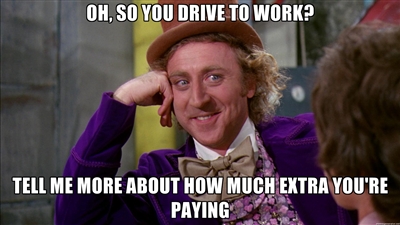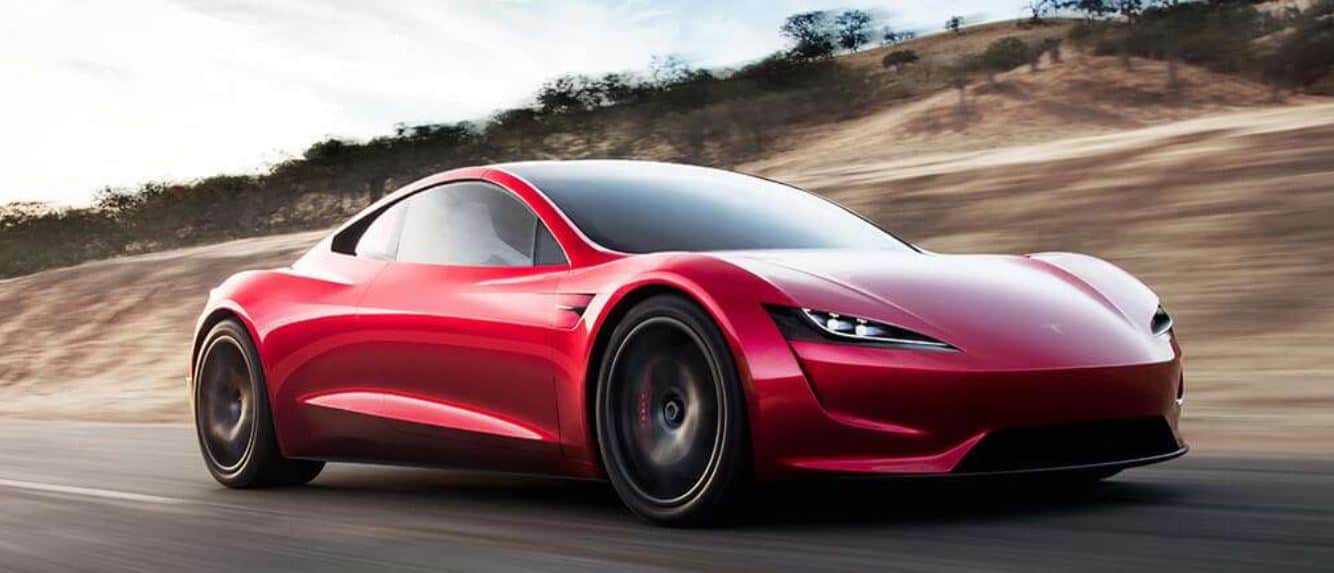Driving a car is dangerous the more often you do it (higher probability of a serious crash) and also costs you money in many different ways (your health, the car, petrol, rego, insurance, repairs, servicing, parking, tickets and so on).
It’s also constantly getting worse and worse as Australia grows and the roads and public transport systems get more cramped. However we’re in the business of paying off mortgages quicker. So today we’re going to look into some of the best ways Australians can seriously reduce their car expenses in order to then put more towards their mortgage repayments.
Table of Contents
Just Move Closer!
One of the most common but unfortunately unworkable suggestions is to purchase your house so close to your work that you can walk there and back (say <5 km’s or so). Others suggest that it be within biking distance however few of these people live in giant sprawling cities such as Melbourne or Sydney.
These two locations are not only two of the world’s biggest cities, they are also two of the most expensive cities in terms of house prices versus wages. These two factors combine to make up an extremely evil scenario where in order to buy close to your work (which is highly likely to be in the CBD area’s) you have to pay outrageous prices often for small, 2 bedroom apartments (like say this one costing $690,000).
If you want a more modest mortgage amount then you have to go further out increasing your commute time and transport expenses. You just can’t win! Except you can win, you just have to know how to best manage this usually very large expense.
Change Your Job Location

Whilst this suggestion obviously can’t be done at the drop of a hat, it’s something that has huge repercussions if done well. Sure, you might be happily employed now with a commute of 20 km’s… but that’s not always going to be the case.
Most Australian’s change jobs every 2-4 years so when that next time comes around make it a very high priority to favour a job that’s closer to your home, even if it pays a bit less!
At a fuel price of $1.50/L, driving to and from work 5 days a week in a moderately efficient car (say 7 L/100 km) it will cost you an extra $546 per year to work 10 km’s further away. Given city driving is usually less efficient too it’s likely even more costly than that, plus it doesn’t even take into consideration your time, reduced safety, wear and tear costs, energy drain and city parking fees which can be upwards of $15 a day!
Commuting 20+ km’s to and from work each day is hell, bad for you in virtually every way possible and should be avoided at all costs.
Sometimes depending on your line of work you may never be able to find work outside of the CBD, however always at least try and research for more suburban job opportunities. Many companies are setting up their main headquarters outside of the city limits or you can even search out small or medium sized companies that tend not to locate right in the heart of cities.
Drop A Car
For most in Australia at least 1 car is needed as our public transport isn’t as good as other countries and the distances involved for commuting as well as just generally getting around are so large.
However when you start talking about two or even three cars all within the same family/house… the argument starts to deteriorate quickly. There’s also no quicker and easier way to drop a whole boat load of expenses than to get rid of a car.
Even with a car just literally sitting in your driveway and never driving a single kilometre all year, it’ll still cost you in repayments (or upfront costs), servicing, rego and insurance. Just rego and insurance alone can easily cost $1,500 a year!
As such you don’t want to have cars just sitting around doing nothing the vast majority of the time. It might be convenient to have one car per family member, but it’s going to cost you a huge amount every year.
Sit down and have a good, honest review on how much you use each of your cars and consider the possibility of only living with just 1 car. You can learn more by reading this previous post: How To Live With Only One Car.
Drive Less, Buy Better
Finally let’s just generally discuss the car. You may already have one, it might be a bomb or it might be a brand new super massive V8 monster, either way there are loads of things you can do to reduce your costs. The most obvious but often over looked one is to simply drive less.
We all should be doing this even if it doesn’t save us money, if you don’t think so, have a movie night with An Inconvenient Truth then hopefully you’ll get the picture. I love driving cars fast and love cruising along on a gleaming summers day… but it should all be in moderation and if this good act helps pay off my mortgage quicker too, then I’m all for it!
Now in America they are extremely set on Leasing and Financing brand new vehicles that are often well… basically the equivalent of trucks (the best selling cars for June 2012 in the US was the Ford F-Series like this one). They’re massive and just chew threw the petrol non-stop.
Here in Australia we seem to have some very good low fuel consumption cars and for the most part, a lot of them seem to be in the top 10 best sellers, however we also seem to be quite big fans of SUV’s and Utes as I see them cruising around a lot now a days. If you’re buying your next car or even wanting to sell your current one and buy a cheaper one an SUV really isn’t the way to go.

This topic can get very heated, very quickly so I will try and stick purely to the facts by choosing a very common Australian choice in car, the 2019 Hyundai Elantra Go (Sedan) versus the 2019 Hyundai Tucson Active (SUV):
- The SUV costs more to buy (sedan was $20,990 vs. the SUV which was $28,990)
- The SUV uses more petrol than the sedan (7 L/100km for the sedan vs. 7.8 L/100km for the SUV)
- Being higher up makes it harder to judge your speed leading to more risky driving and likely more speeding fines as noted below
Conclusion: The two studies demonstrate that, when they are not able to reference a speedometer, drivers choose to drive faster when they view the road from an eye height that is representative of a large SUV compared to that of a small sports car.
Clearly the sedan is the better option (based on facts not feelings which I do acknowledge comes into play with cars). That said hatches I believe are an even better choice, especially for young people wanting to pour as much as they can into their mortgage instead of yet another petrol bill.
Hatches take the bar up yet another notch with another common car being something like the 2019 Mazda 2 Neo. With this you’ll get:
- Even cheaper still at $17,540
- Even lower petrol use (5.4 L/100km)
- A lower view that promotes slower driving not to mention better handling

Further still (as with most finance blog recommendations) I’d suggest that the idea of buying a new car be firmly kicked out the window. Leasing a car or salary sacrificing it should also be ditched as these only apply to new or newish (4 years or less) cars. What we’re after may fall into the 4 year old mark, but more than likely you should be looking for something around 5-6 years old.
Now I’m by no means a car expert so obviously this number will vary depending on the make/model of the car you’re investigating. Some manufacturers are more reliable than others and some cost more to repair than others. Then again some cars devalue very quickly and can make for a great deal.
To be clear, that 5 year figure should be taken as a guide rather than a strict statement. You want to be buying a car that is definitely not new, it should instead be one that has lost most of its price tag, but at the same time isn’t a derelict bomb that is going to break down on you every 4 seconds.
For even more reading on how to think when buying a new car and which ones make good, low cost choices see Top 10 Cars for Smart People. It references US prices and model names but many of the cars are available here in Australia too and should be considered when buying.
Plug That Hole!

Now while some of these suggestions might not work for everyone, I don’t think it’s too outrageous to assume that at least some will. Even if there’s only one of the suggestions above that turns out to be viable it should still save you considerable time and money.
Money that can be thrown directly at your mortgage year after year. Driving is fantastic fun, gives us freedom and helps us get things done day to day but it shouldn’t drain our bank accounts in the process. Plus given it’s usually the number one most expensive thing on everyone’s list, it obviously should be the top thing to optimise too.
So what have you done to decrease your transportation bills? Was it on our list or do you have another idea? If so, let us know in the comments below so everyone can benefit!
The benefits include: 1) How to pay off your mortgage faster than 99% of people with one hour a month of work 2) How to get rid of your debt and have the freedom to spend money on the things you love, guilt free 3) Clear outline of how to setup your expenses, mortgage and general finance 4) How offset accounts work and how to get the same result without being gouged by the big banks 5) How to cut through the crap and focus on the things that truly matter when taking down a mortgage 6) How to adjust the strategy so it works for you, even if you have kids, even if you only have one income 7) How to do all of these things and maintain a normal social life (and never be cheap).


